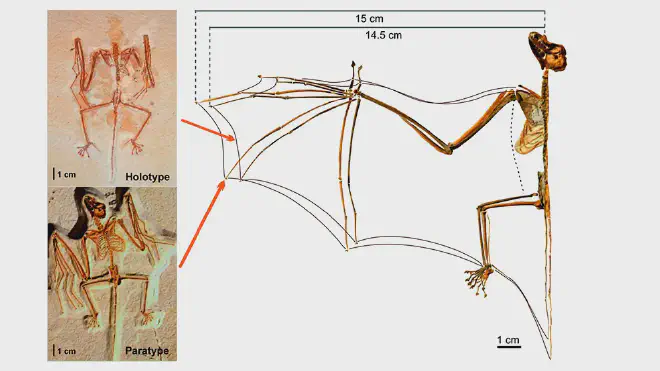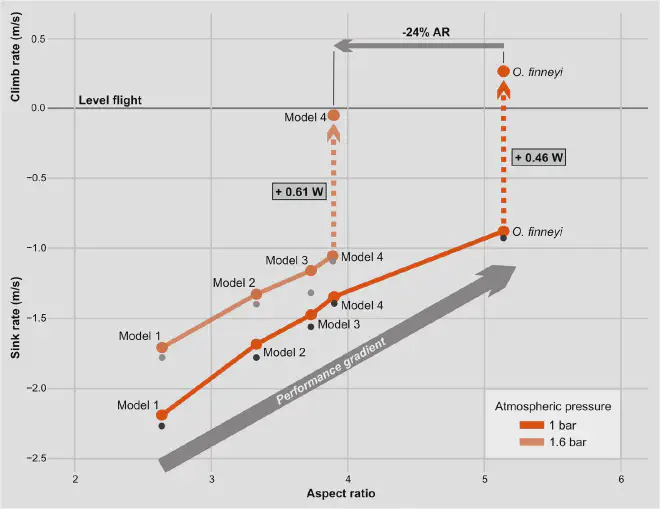
The CONICET scientist Norberto Giannini led the paper that was published in Communications Biology.
Current drones - very useful flying objects with various fields of application - still cannot emulate the sophisticated biomechanical systems that animals - birds, bats - have developed for flying. The origin of the incredible aerodynamic characteristics of living organisms in nature is still a mystery that, if unveiled, could mean a significant advancement for the creation of machines. “Drones, like the small devices that are on Mars, are still very crude. There is a lot of interest from the military, engineering, and countless other practical applications to understand the flight of animals, to create machines that resemble them and to explore the practical advantages and skills that animals have to move in the air,” explains Norberto Giannini, a scientist at CONICET in the Lillo Executive Unit (UEL, CONICET-Miguel Lillo Foundation), who has just published a study in the prestigious international journal Communications Biology, part of the Nature group, in which he revealed, along with an international team, how bats began to fly in the primitive era, a mystery that remained unanswered and could open the door to much more sophisticated developments and machines in the field of aerospace engineering.

“Bats are a perfect study model in that sense: the only flying mammals and one of the three examples that nature offers of powered flight evolution”. “Pterosaurs, birds, and bats are the only vertebrates with the ability of powered flight, that is, flapping with wings,” explains Giannini, “and compared to insects, they are much larger.” “But current bats have a very sophisticated flight because their wing apparatus is highly evolved and has many functional details. We are looking for the oldest fossil bat that was discovered to see how it began to fly. How it made that first transition from gliding to flying.”
In 1859, Charles Darwin had already theoretically postulated in his book On the Origin of Species that bats had transitioned from gliding to flying in the air. Today it is known that this may have been possible due to mutations of the hand that transformed it into a webbed and elongated structure, which integrated into a pre-existing gliding bauplan (body plan). The Giannini team was able to prove that theory for the first time by combining three scientific advances: on one hand, having a computational model sufficiently capable of simulating the flight of primitive bats. On the other hand, having the oldest bat fossil on record: Onychonycteris finneyi. An animal that lived 52 million years ago, in the early Eocene, of which two fossils were found in 2008 and are preserved in Canada and New York. “Thirdly, to emulate the atmosphere of that time, in order to establish the mechanisms involved in the evolution of powered flight in mammals in the environment they had to evolve in, which was much denser than the current one.”
“Birds and mammals fly by flapping, propelling themselves in the air with their wings. In contrast to other species that glide, like the flying squirrel, bats use their muscular strength and their wings. That transition is biomechanically very demanding, it is difficult,” explains Giannini. “The challenges in the air for flying are many from a biomechanical point of view. The animal has to overcome gravity, the risks of crashing, falling. Additionally, air is a low-density fluid compared to water, so it is difficult to use it for movement.” Flying means transferring energy to the air in a specific way. The same happens with a fish that is flapping in the water, but the fluid medium is easier to operate from the standpoint of the force that the animal can exert on the medium. A fish’s fin can be very small, while a mammal’s wing is comparatively very large. A very large anatomical structure is needed. “Reaching that point evolutionarily is very difficult. It is one of the problems that Darwin faced, who spoke of the difficulty of that transition, and which we have managed to verify. We showed that the key fossil bat, Onychonycteris finneyi, was capable of gliding and flapping. A characteristic that supports the current gliding hypothesis regarding the origins of mammalian flight for aerodynamic reasons,” Giannini points out.

“It can be pointed out that there is a validation of the Darwinian theory that the origin of flight was from a glider to a flyer,” says the scientist. “This means that other theories are weakened, which postulated that the origin of flight in bats could be from the ground, suggesting that animals ran fast to gain speed and eventually rise and fly, as is accepted today for birds. In bats, this is very unlikely because their limbs are structurally different and they cannot run. Air needs to circulate through the wings. The wings create the pressure difference that produces lift. The energy to move the wings comes from the muscles themselves beating the air. The air passes through the wings and there lift is produced, the aerodynamic force that keeps it in that level flight. We demonstrated that the estimated muscle force for the fossil is sufficient for that anatomy, both in normal and hyperdense conditions. And it can also glide, that is what connects the two systems,” says Giannini.
Through their inferences, scientists also observed that “the transition from gliding to flying may have even occurred earlier. While we found that in a hyper-dense atmosphere they could already sustain flight, it can be seen that the transition would have occurred in an even more primitive structure than what we are observing in the fossil. This means that before this fossil, there could have been a more primitive gliding animal that transitioned to flight,” warns Giannini, and finally points to the next step of this research: “What we want now is to test these results with a real robotic version, not a computational model. We want to verify in the physical reality what we observed theoretically,” concludes the scientist.
Citation #
Giannini, NP, Cannell, A., Amador, LI et al. “La paleoatmósfera facilita la transición del planeo al vuelo motorizado en el murciélago del Eoceno, Onychonycteris finneyi” . Común Biol 7 , 365 (2024). https://doi.org/10.1038/s42003-024-06032-9
- This article is a translated version, by Notaspampeanas, of that written by Cintia Kemelmajer, and published in CONICET’s website.

